Many car owners experience the issue of an air conditioning system that works intermittently. This involves the car AC unit turning on and providing cool, comfortable air for a few minutes before shutting off again. This repeated cycle can make trips in a vehicle very uncomfortable and unpleasant. If you are one of those drivers who say, "my car AC sometimes works sometimes doesn't," understanding why this happens and how to fix it is very important information. In this article, we will discuss common causes for an AC that turns on and off intermittently and possible solutions to this issue so that you can diagnose your situation or find suitable remedies for car AC.
See also: How to Trick a Mass Air Flow Sensor?
What Should You Do If Your Car AC Sometimes Works Sometimes Doesn't?

When experiencing an intermittent AC issue with a car, the first step is to document any related events so that they can be explained to a mechanic. This will help them narrow down the cause of the problem and provide an appropriate solution. Those comfortable working on cars may choose to diagnose their AC system as its many components make up its complexity. For individuals without knowledge or experience in this area, taking their vehicle to a mechanic is recommended to receive professional assistance.
How To Solve My Car AC Sometimes Works Sometimes Doesn't?

It is sometimes possible to diagnose and repair car AC problems without the help of a professional. To begin with, owners should take note of any strange occurrences they notice while operating the air conditioning, such as cycling on and off, failing in stop-and-go traffic or on highways, and odd smells when it goes off. From there, owners can check under the hood for leaky parts that may be easily repaired at home. If these steps do not work, further investigation may be required from an auto technician:
- Check the status of the AC control panel (is it working correctly?)
- How long were you driving when AC started cycling?
- Does it fail in stop–and–go traffic or highway?
- Does the AC fail at times or cycle on & off?
- Are there strange smells when the AC goes off?
Causes of a Problematic Air Conditioner

Lack/Overcharged Refrigerant

Lack/overcharged refrigerant R-134a is a liquid refrigerant used in vehicles manufactured after 1996. It is essential for the proper functioning of the air conditioning system, requiring an exact amount to be present. Too much or too little of this substance can lead to various problems, including reduced cooling efficiency, increased fuel costs, and other performance issues. Owners must ensure their vehicle has the correct amount of R-134a so their air conditioner runs as it should.
Lack of R-134a
When diagnosing a lack of R-134a, it is important to look for signs such as white emissions from the hood, a hissing/clicking sound, and the smell of Freon. The grease-like liquid around AC parts can indicate refrigerant leaks, which cause the R-134a level to drop. In addition, a low gauge reading can also signify low refrigerant levels. These symptoms are indicative of malfunctioning AC and failure of clutch engagement. An AC manifold gauge is necessary to diagnose this issue properly.
Individuals are generally not recommended to recharge their system without professional assistance. A technician should be called upon to locate any possible leaks, as it can be difficult to pinpoint the source of a leak on one's own. After addressing the issue of any potential leaks, the technician will then go about replacing the correct level of R-134a to prevent overcharging of the system. This ensures proper safety measures are taken when recharging a car’s air conditioning system.
Overcharged AC
To diagnose an overcharged AC system, technicians must first identify signs such as a slow or stopped cooling process and higher pressure readings. This is typically due to too much R-134a in the air conditioning system, which does not allow enough room for gas expansion. As a result, the air compressor may also be unable to handle these increased pressures, leading to an even higher temperature.
Unfortunately, an individual can't fix an AC that has been overcharged with R-134a safely. This is due to laws and regulations surrounding this particular gas, which can harm the environment if mishandled. The only way to correctly remove excess R-134a from an AC system is through specialized equipment operated by a trained professional. The extra fluid will then be collected into an airtight container ready for reuse or recycling.
Faulty AC Compressor

A failed AC compressor means the air refrigerant is not being pressurized, resulting in high cabin temperatures and other issues. Signs of a bad AC compressor include moisture leaks, tripping circuit breakers, loud noises from the compressor, broken suction lines, oil leaks, and physical damage. Furthermore, if your cabin temperature keeps fluctuating or the clutch is stiff, it indicates potential problems with the air compressor.
To inspect for these signs and save money on repairs, be sure to check for the following:
- Moisture leak
- Tripping circuit breaker
- Loud noise from the compressor
- Broken suction lines
- Oil leaks & physical damage
- Fluctuating cabin temperature
- Stiff clutches
If the conclusion is that the air compressor of a vehicle's AC system has failed, then changing it is necessary to restore proper functioning. DIYers may be able to change out the compressor themselves; however, as this is a complex procedure, it is recommended to seek assistance from an auto mechanic with experience and qualifications in performing this kind of repair work.
Dirty Cabin Air Filter/ Fan Housing
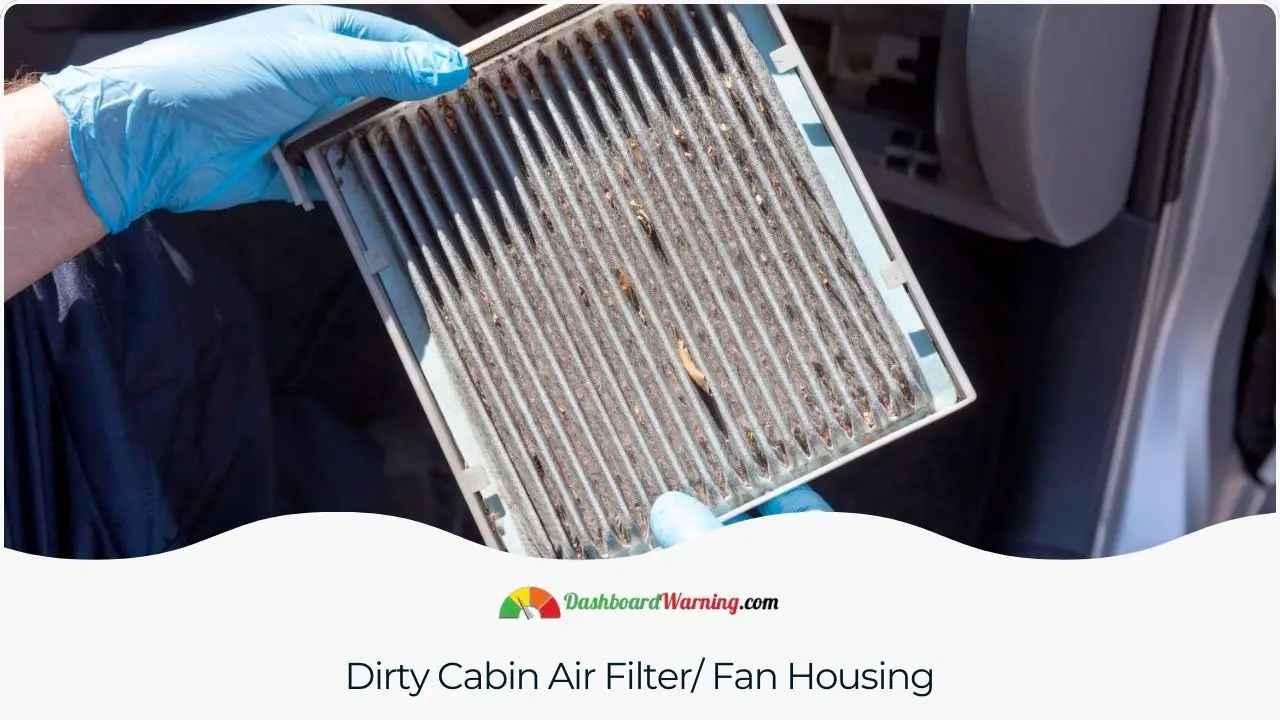
A vehicle's cabin air filter and fan housing should be regularly checked for dirt or clogs, as these can cause the AC to work harder. Fortunately, replacing the cabin air filter requires only a screwdriver, usually located behind the glove box. The same applies to cleaning a dirty fan housing, removing the fan from the engine compartment, and using a degreaser before putting it back in place. With just a few simple steps, any driver can ensure their car's AC runs optimally.
Faulty Thermostat
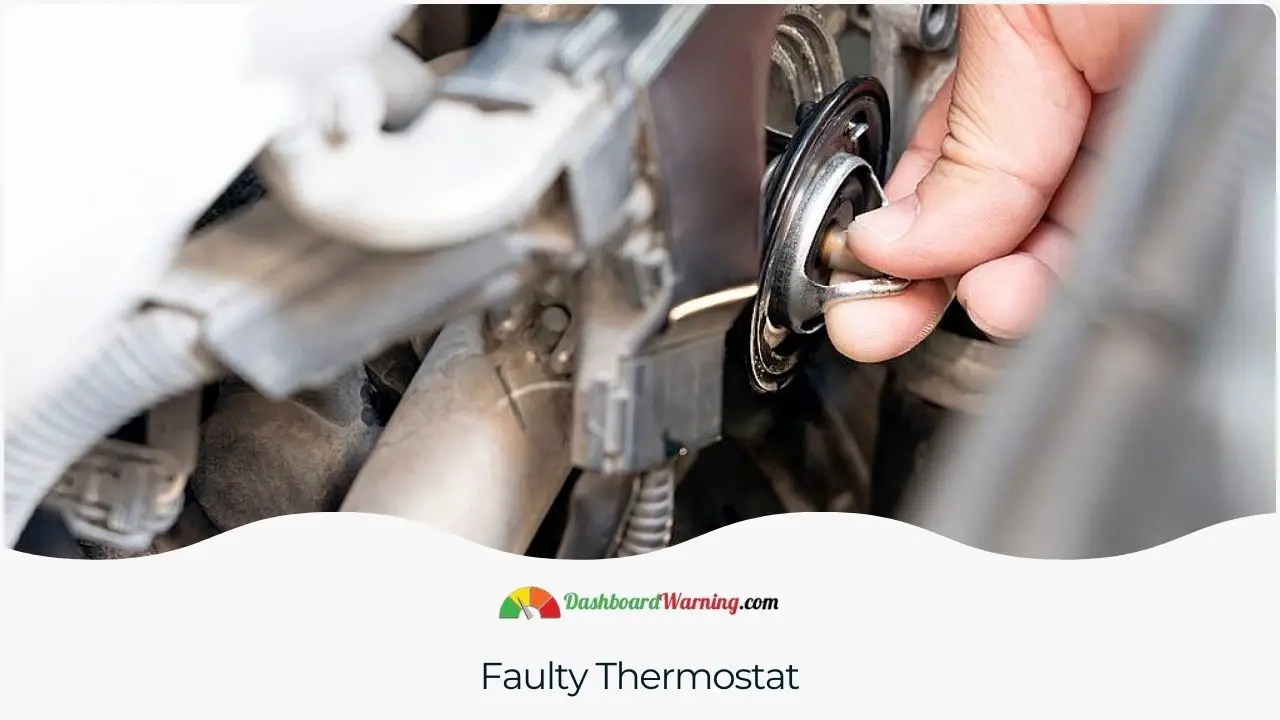
A faulty thermostat can significantly impact a vehicle's air conditioning (AC) system. Thermostats are part of the car's computer system, which helps regulate temperature and ensure smooth operation of the AC compressor. When this system malfunctions, it could lead to overheating in the engine and erratic changes in temperature readings on the dashboard gauge.
If you suspect that your vehicle is suffering from a failing thermostat, there are several signs to look out for:
- Overheating engine
- Erratic temperature changes on the dash gauge
- Coolant leaking
To properly fix these issues, replace the vehicle’s thermostat, flush the cooling system, and top off the coolant reservoir. Although most DIYers will be able to do this themselves, it is recommended that they bring it into an auto repair shop for proper diagnosis and repairs if necessary.
Blocked Evaporator Drain
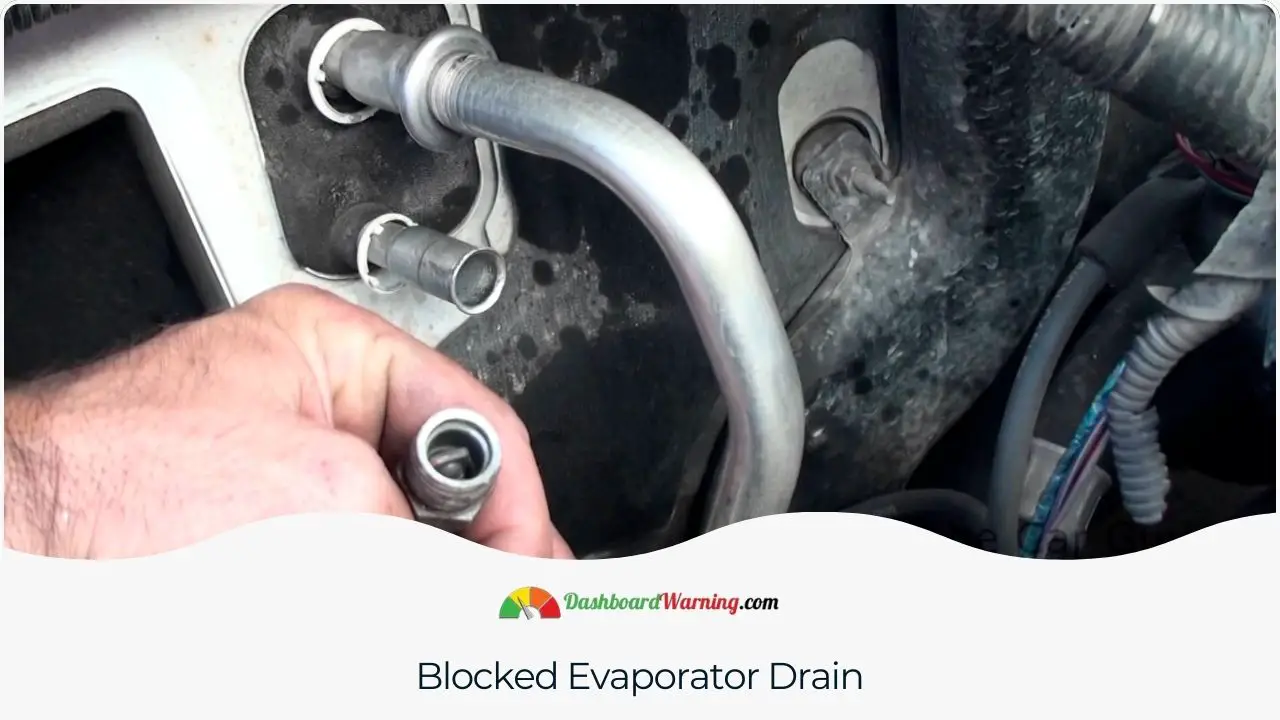
The evaporator in a car's AC system is important to keep the air inside the cabin cool and comfortable. When the evaporator drain tube becomes clogged, it can cause water to accumulate around the footwells and create a sloshing sound when making turns. Fortunately, there is an easy way to unclog this tube if needed.
To remove a block from an evaporator drain tube, you will need one foot of metal wire and appropriate jacking equipment for your vehicle. Once your car is parked on a flat surface with enough light, use the jack to raise it off of the ground before adding jack stands for extra safety. Then locate the small rubber hose underneath that connects to the engine and detach it so you can access where any potential clogs may have formed inside. With one end of your metal wire shaped into a hook, carefully push it into this opening while twisting until you reach any potential blockage that needs removal. Allow water to drain out before reattaching the drain pipe and lowering your car back onto its wheels using jack stands or other jacking tools as necessary. Take it out for another test drive afterward to ensure everything is working properly again!
5 Tips To Unblock An Evaporator Drain Tube:
- Park on a flat surface with adequate lighting
- Use emergency brake & appropriate jacking equipment
- Locate a small rubber hose connected underneath the car
- Push hooked metal wire into the pipe while twisting it gently
- Reattach the hose after removing the blockage & lower the vehicle
Bad AC Control Unit
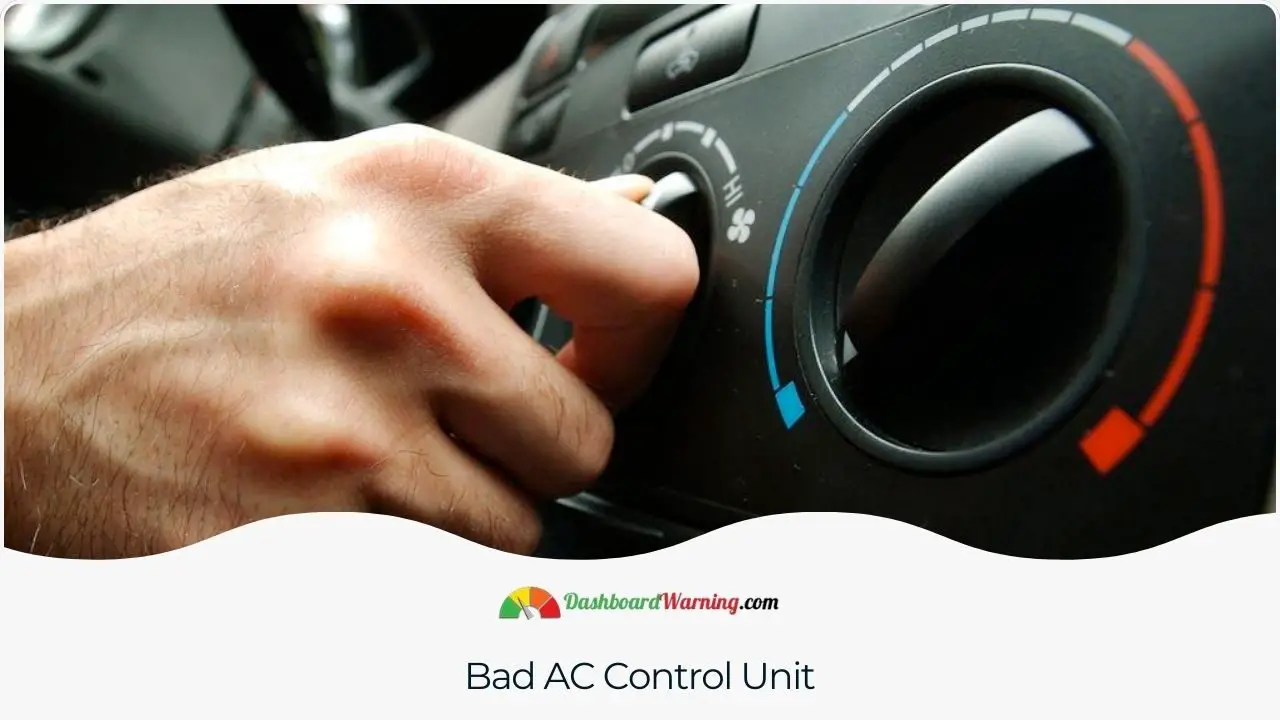
Regarding air conditioners, the control unit plays a crucial role in regulating all the functions of an AC system. This unit can differ between car brands, models, and even years, yet some general symptoms indicate a failing control panel.
Some common signs include inconsistent cooling where AC struggles to maintain cabin temperatures, uneven air distribution, difficulty controlling fan speed, problems using the button to engage the air compressor, and intermittent air re-circulation on hot days. If any of these issues occur, you must replace your failing control panel with one that fits your specific vehicle year and make. To ensure proper installation and functioning of this new part, refer to the guide on your new control unit and your vehicle’s manufacturer’s manual.
5 Symptoms Indicating A Failing Control Panel:
- Inconsistent cooling where AC struggles to maintain cabin temperatures
- Uneven air distribution
- Inability to regulate fan speed
- Problems using the button for engaging the air compressor
- Intermittent re-circulation of air on hot days
Leaking Around the Compressor Shaft Seal

Due to its location, mechanics, and advanced DIYers are typically the best equipped to replace a compressor shaft seal. This is because refrigerant can often escape through the compressor shaft seal - especially if it is old, worn, and of second-rate quality. Unfortunately, this type of leak is one of the most challenging to detect.
This is primarily because the shaft seal sits behind the clutch hub and under the dust cover in many vehicles, making it difficult for an untrained eye to spot. To diagnose such an issue, one needs to inspect the compressor shaft seal visually or use UV dye injection to accurately identify any leaks from this part. Once identified, it should be replaced by a professional as soon as possible for your vehicle's AC system to work effectively once again.
Broken Electric Blower Motor
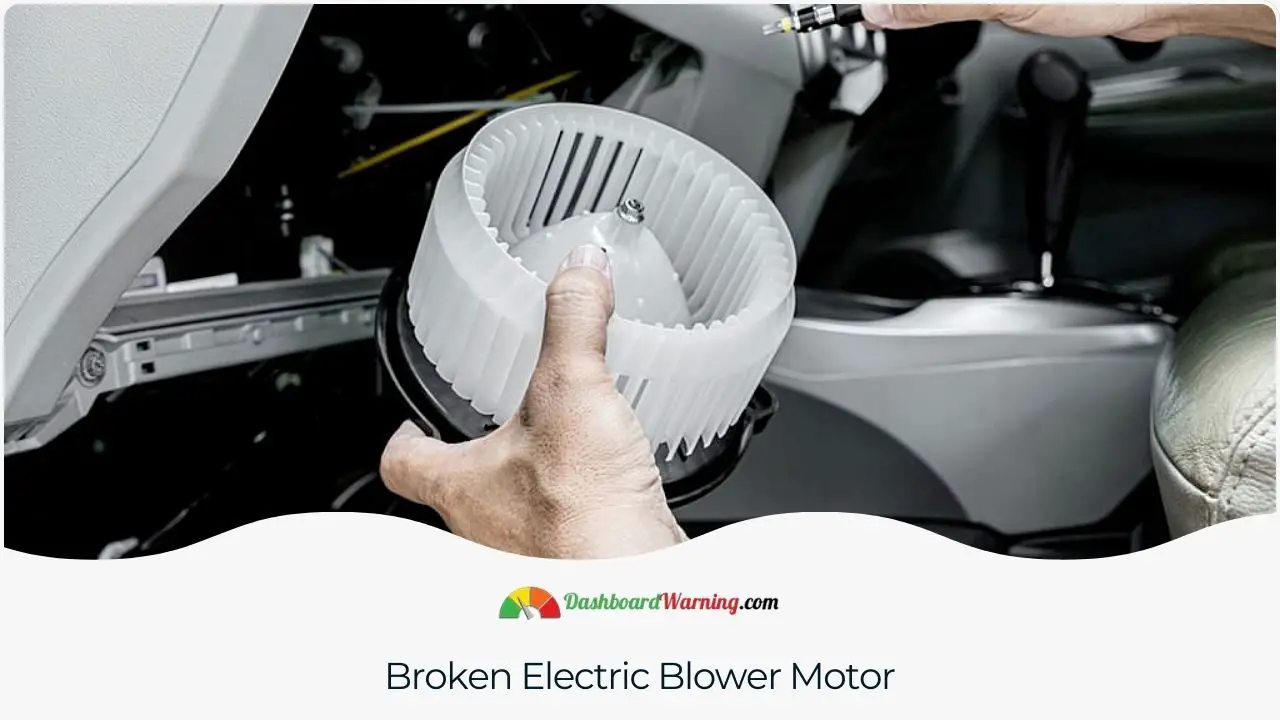
The electric blower motor is essential to a car’s AC system. It is responsible for blowing air through the vents and can become faulty over time, leading to reduced airflow from the vents or lack of airflow when the AC is on. Common symptoms that suggest this component has worn down include low airflow, smoke from the vents, and the fan running only at certain speeds.
Common causes of a broken electric blower motor are short circuits, bad switches, and fluid leaks. Repairing this issue requires taking apart much of the interior components that those inexperienced in auto repair should not attempt due to its complexity. Identifying if this is causing your problem before any repairs are done is important, as doing so will save time and money in the long run.
Here is a listicle highlighting what you need to know about electric blower motor breakdown:
- Low airflow from the vents or lack thereof, when AC is on, are common signs it's malfunctioning
- Causes usually involve short circuits, bad switches, or fluid leaks
- Smoke may blow out of your vents if it's particularly damaged
- It is not suitable for beginners in auto repair to undertake themselves
- Identifying the problem properly beforehand will ensure more effective solutions
Faulty Temperature Sensor

The ambient temperature sensor is important in operating a vehicle's air conditioning system. This sensor is responsible for calculating the environment’s temperature and relaying it to the vehicle’s computer as a reference for calculations. When the temperature sensor fails, it can give an incorrect reading that will cause uneven cooling.
Replacing this component requires some basic tools and technical know-how. It is recommended that safety gear such as gloves and safety goggles be worn when performing any maintenance or repair on a car.
The following list outlines what is needed to replace an incorrect temperature or pressure sensor:
- Gloves
- Safety goggles
- Socket set
- Plier assortment
- New ambient temperature sensor
Once all necessary items have been gathered, disconnecting power from the battery by removing its cable, locating the faulty sensor at the front of the engine bay, disconnecting wiring from old components, installing new parts, and reconnecting power are all steps required to ensure successful completion of this replacement job. Following installation, one should take their car out on a test drive to check if the AC functions correctly with different temperatures outside of cabin space before considering the task complete and giving yourself a pat on the back!
See also: DTC B1493 Hyundai
Faulty Pressure Sensor
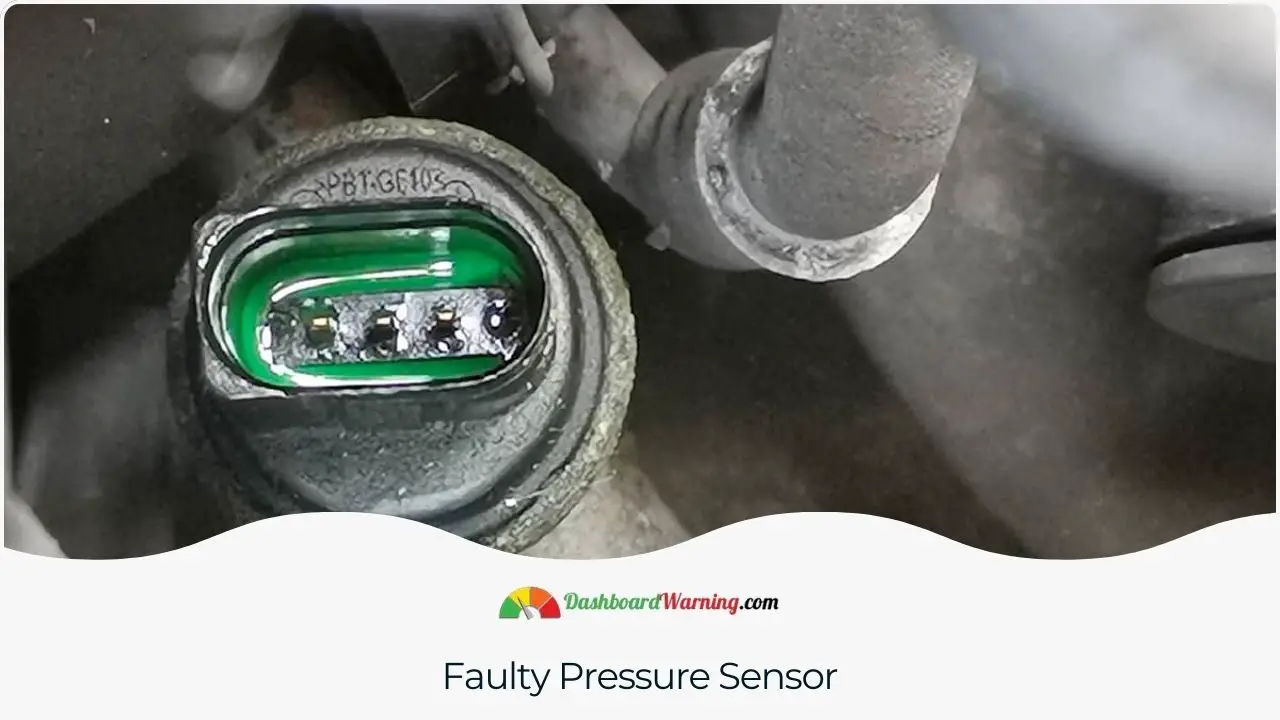
An incorrect pressure reading in an air conditioning system can cause the AC to turn on and off rapidly. This is because the pressure sensor notifies the AC that it needs to shut down due to overheating or may prevent it from turning on altogether. One must use a low-pressure gauge with a refrigerant recharge kit to diagnose a malfunctioning pressure sensor. If the reading of this gauge falls below 56 psi, then there are likely problems related to the pressure sensor.
If intermittent heating persists after diagnosing any issues with the pressure sensors, it's best to take your vehicle to a professional mechanic for further verification. The mechanic will be able to test electrical connections and scan for the health status of these sensors by using an OBD2 scanner if necessary. Replacing faulty switches should also be easy; you only need to know which switch (high or low) isn't working properly before disconnecting its battery and locating and replacing old ones with new ones.
See also: Code P219A – Bank 1 Air/Fuel Ratio Imbalance
How Much Does It Cost to Repair The AC Problem?

The cost to repair an intermittent AC varies depending on the cause of the problem. A car owner needs to investigate and determine the source of the issue before taking their vehicle to a mechanic to ensure that they know what needs to be done. Minor compressor repairs typically range from $170 - $370, while more complex issues can cost up to $4000. An AC recharge usually costs between $100 -$150, whereas clutch repair or replacement may cost between $200-$750. Taking proactive steps early by diagnosing and addressing potential problems can help save money in costly future repairs.
When it comes to cars, a broken air conditioner can be an annoyance many drivers would rather do without. The car AC sometimes works and sometimes doesn't, which can be frustrating. Fortunately, understanding why this happens and how to fix it is possible with the right information.
See also: P1035 Code Ford, Chevy, Toyota, Jeep
The causes of an intermittent car AC could range from something easy to fix, like low refrigerant levels, to more complex issues, such as electrical problems or even damage to the compressor system. Taking the vehicle to a repair shop or service center may be necessary to address these issues properly. However, one should take action immediately upon noticing any signs of malfunctioning within their vehicle’s AC system to prevent further inconvenience. With proper care and maintenance, your car’s air conditioning should not give you any trouble from now on!
Was this page helpful?


More important content about Tips and Advice
Porsche Cayenne Years To Avoid
Subaru Legacy Years To Avoid - 5 Worst Years
Pt Cruiser Years To Avoid
Use 5w30 instead of 0w20 - Advantages and Disadvantages
Tractor Dashboard Symbols And Meanings
Tips and Advice
Subaru Legacy Years To Avoid - 5 Worst Years
Pt Cruiser Years To Avoid
Use 5w30 instead of 0w20 - Advantages and Disadvantages
Tractor Dashboard Symbols And Meanings
Suzuki Sx4 Years To Avoid - 5 Worst Years
Cummins ISX Years To Avoid and Why